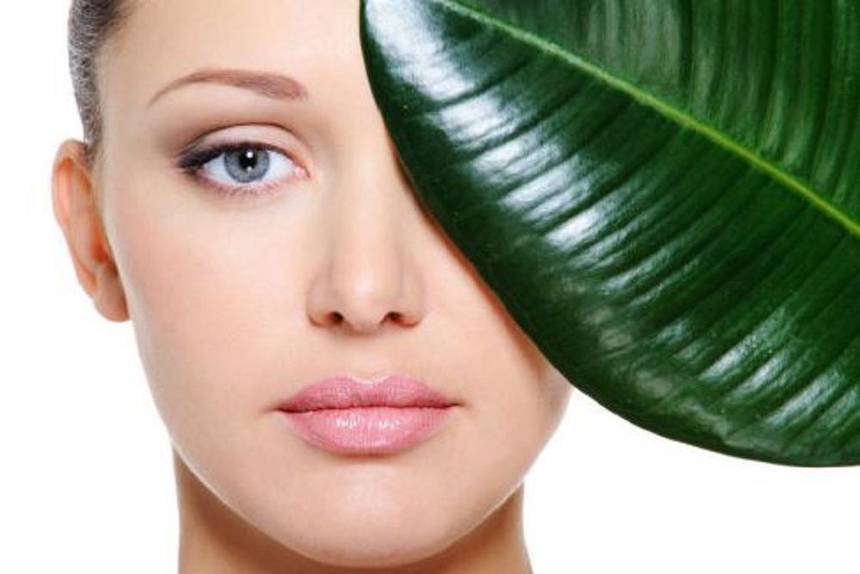Seven smart strategies for oily skin
Think about the last group photo you were in. Were you the extra shiny person, reflecting light like a disco ball? And did you achieve this honour without reaching for the illuminator?
Having oily skin is no walk in the park, although it’s likely your mother and her friends have said that having oily skin is good because you’ll have fewer lines on your face later on in life. But right now you’re not thinking about wrinkles; you’re thinking about how to hold back the oil slick and avoid the next breakout.
Use an oil-based cleanser
It might feel counterintuitive to use an oil-based cleanser when you have oily skin, but nothing can cleanse your skin better than oil. Oil-based cleansers work by binding to surface impurities to pull dirt, sweat, sebum and makeup out of the pores. Give your face a good massage at the same time and you have a win-win effect. To remove the cleanser, use warm water and a washcloth, then do a final rinse with water. Pat dry gently.
With toner, spray rather than wipe
When you use an effective oil-based cleanser, there’s no need to wipe your face with a cotton pad soaked in toner. Instead, use a spritz or mist like Okana Cucumber + Lettuce Toner. The main mission of a good toner is to bring your skin’s pH back to the nirvana of 5.5. By misting your face with toner you’re also sending less rubbish to landfill – no more single-use cotton pads for you!
Target bacteria with spot treatments
Oily skin is often spotty skin, at least until your new oil-balancing skincare routine has done the trick anyway. If you have more than the occasional spot, you’re probably troubled by Propionibacterium acnes (P. acnes), the bacteria that lives on the skin and causes acne. Using a spot treatment to treat breakouts is a good idea, however be careful to choose one that deals to the bacteria - simply drying up pimples isn’t enough. Active ingredients that kill bacteria include benzoyl peroxide and iodine.
Never, ever skip the moisturiser
It’s tempting to go heavy on the cleanser and toner, then skip moisturising because it seems like your skin is doing that job for itself. Don’t do it! It’s easy to confuse oil with hydration and decide to eliminate moisturiser, but a good moisturiser actually helps to control oil production by looking after your skin barrier. If your skin is inclined to be inflamed during breakouts, choose a moisturiser with anti-inflammatory properties. For example, our day moisturiser contains apricot kernel oil and olive oil, which are both anti-inflammatory.
Don’t bake in the sun
Sun exposure is never a good idea for facial skin, even if you think it might clear up blemishes. While oily skin is slightly more resistant to sun that other skin, because the oil acts as an extra layer of protection, it’s just as prone to long-term photo-damage as other types of skin. Always wear a non-comedogenic sunscreen or choose a foundation with a high SPF factor.
Blot, don’t powder
For eons, women have been covering the shine with powder - layer upon layer, until it gets all cakey and weird looking. While powder does nix the shine, it’s also adding more foreign material to your face that will need to be effectively removed before bed. The more contaminants you put on your skin in a day, the more chance of blocked pores and all the problems that come with them. As an alternative, try a purpose-built facial blotting paper. Some people also swear by paper napkins from Starbucks, plain wrapping tissue, perm end-wrappers and coffee filter paper. The good thing about blotting papers is that they absorb the shine without adding more stuff to your face – and they’re compostable!
Eat nuts and seeds or take a linoleic acid supplement
Linoleic acid is a fatty acid that’s found in the oil your skin makes (sebum). When your diet is low in linoleic acid, your sebum becomes thicker and stickier, so much more likely to clog your pores and cause acne. You can buy linoleic acid supplements, usually called CLA (conjugated linoleic acid), or you can simply eat more nuts and seeds. Hemp oil is rich in linoleic acid too.




Leave a comment
This site is protected by hCaptcha and the hCaptcha Privacy Policy and Terms of Service apply.